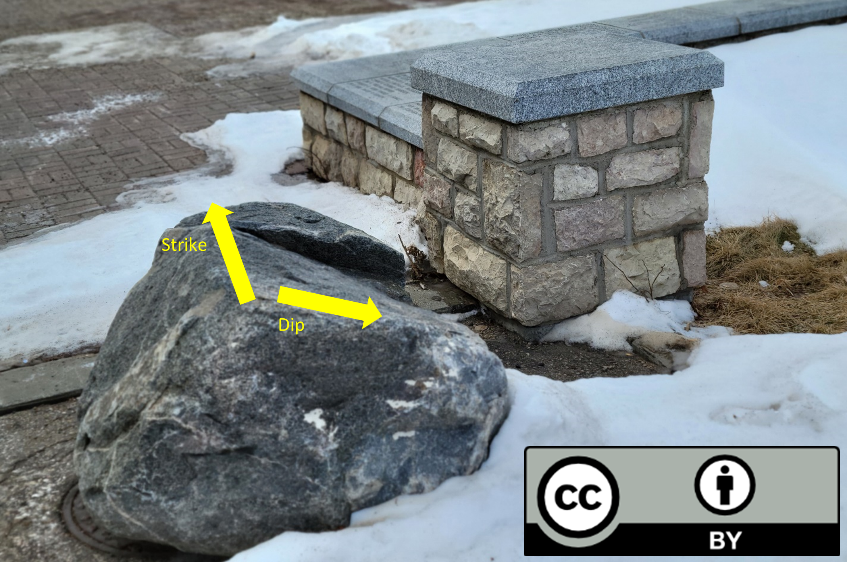Anyone with a cell phone has access to free compass apps. Normally we teach students how to use traditional compasses, but my new lab includes phone compasses in addition to classic methods. I will test this out on March 21st and 28th with 9 different lab teams. This is for a 3rd year rock mechanics course. View details about the lab here.
The point of the lab is to measure the strike and dip of joint surfaces. Joints are natural breaks in rock, and it is important to learn how to measure them. If for example, there are 3 breaks that line up to form a block, there is potential that the rock could fall from an outcrop onto a road and hurt someone. Strike and dip are measurements that show the orientation of joints based on the positioning of a compass in a fixed location.
 In the current lab, we use the arrows on the compasses to line up the direction or strike of a rock surface. Then the dip is a measurement at 90 degrees to strike, from the same point. This time I want my students to be resourceful and see if they get the same answer with a digital compass. But in engineering we teach our students to never trust software until they have tested it with hand calculations, or in this case, by comparing it to 2 mechanical devices that support what the correct answer should be.
In the current lab, we use the arrows on the compasses to line up the direction or strike of a rock surface. Then the dip is a measurement at 90 degrees to strike, from the same point. This time I want my students to be resourceful and see if they get the same answer with a digital compass. But in engineering we teach our students to never trust software until they have tested it with hand calculations, or in this case, by comparing it to 2 mechanical devices that support what the correct answer should be.
Brunton and Silva type compasses that we use are based on magnetics. Anything that messes with magnetics will affect the accuracy of the readings. The new lab write-up is attached. The students will make measurements in the basement of the geology building where we already know that we cannot use our equipment too close to walls or the compasses readings are untruthful because the electrical wires in the wall deflect the compass needles. Then the students will move to the main floor where there are large open spaces in the Geology museum. Afterwards, they will move outdoors and take measurements on actual rock.
Thinking of the construction of the geology building, its main components are made from materials that are mined. It is mostly made from concrete and rebar. The electrical wires and water pipes in the walls are made from metals. Any learning that can be taken with respect to these materials can be transferred to thinking of rock in its natural form. There are locations in the world where relying on a magnetic compass may lead to severe error. Will the same thing happen with a phone compass?

